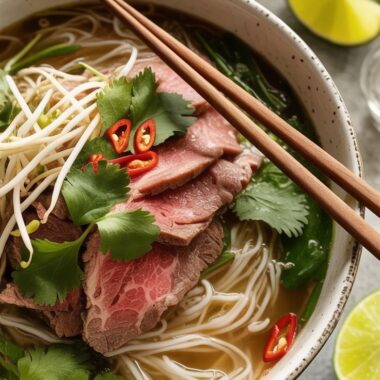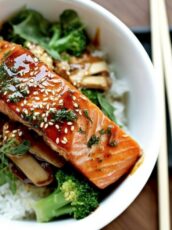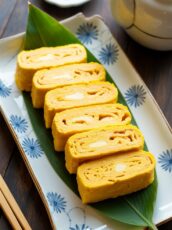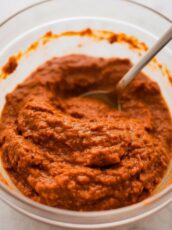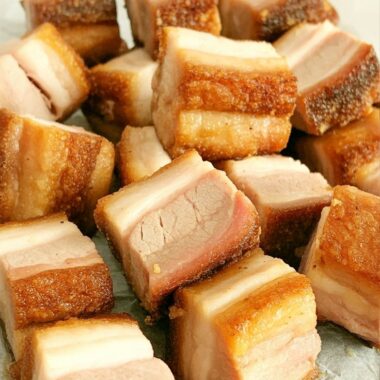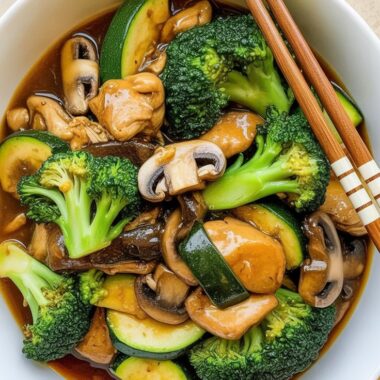There’s something deeply comforting about a bubbling pot of Soondubu Jjigae, especially when it’s made with simple pantry staples and packed with flavor. This Korean soft tofu stew is one of those cozy dishes I turn to when I want a warm, soulful meal but don’t feel like spending hours in the kitchen. It’s got silky tofu, bold aromatics, and a spicy broth that hugs you from the inside out — all ready in under 15 minutes.
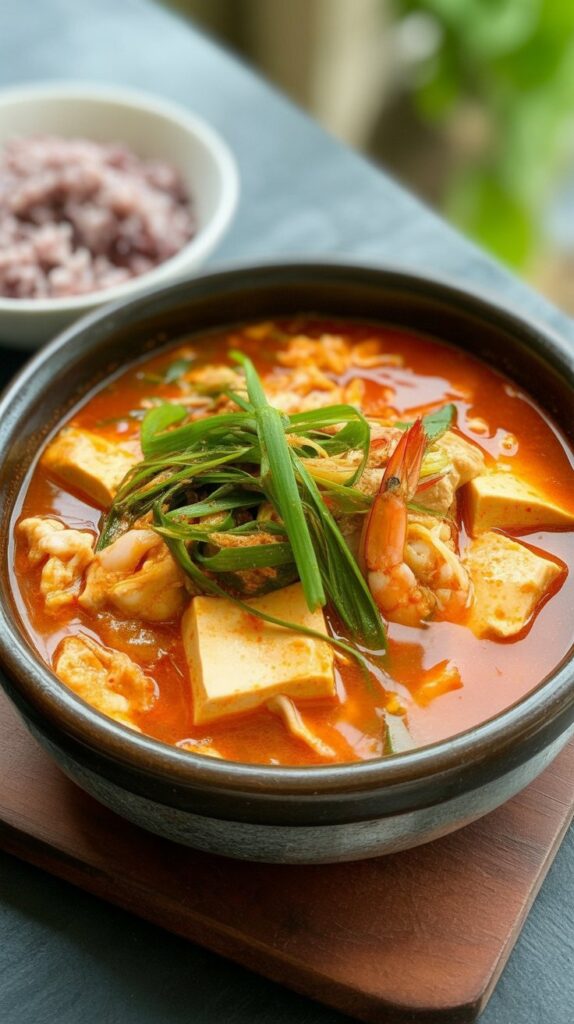
What Makes Soondubu Jjigae So Special?
If you’ve never tried Soondubu Jjigae before, you’re in for a treat. It’s a classic Korean stew made with unpressed soft tofu — the kind that’s almost custard-like — simmered in a spicy, savory broth. The tofu soaks up all the flavors like a sponge and almost melts in your mouth.
What I love most is how customizable this stew is. Whether you’re vegetarian, love seafood, or need a bit of protein like beef or pork, you can tweak the base to match what’s in your fridge. That’s the magic of it — no two pots ever taste exactly the same, and yet every one of them is equally comforting.
Why I Always Crave This on Rainy Days
Whenever the monsoon rolls in or I just need something to warm me up from the inside, this stew is my go-to. I remember the first time I made it from scratch — I was trying to recreate a restaurant version I had during my college days. That bowl was served boiling hot in a stone pot with an egg cracked right in the middle, yolk still runny. It was love at first bite.
Since then, I’ve been making it at home, tweaking the flavors to get that perfect balance of spicy, savory, and slightly sweet. And honestly? I now prefer my homemade version to most places.
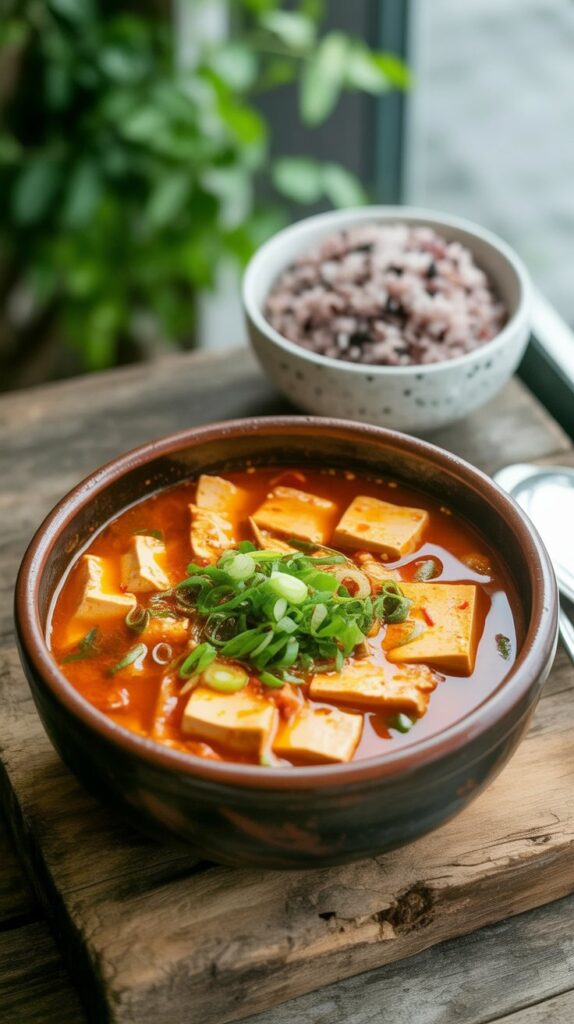
What You’ll Need
Here’s a quick breakdown of the ingredients I usually use. Nothing fancy — most of these are things I already have on hand.
- Soft tofu (Soondubu): You’ll find this in Korean or Asian grocery stores, often in a tube or soft plastic container. If not, regular silken tofu from any store works fine — just handle gently.
- Water or broth: I switch between plain water and homemade anchovy or vegetable broth depending on my mood. If I have leftover dashi or chicken stock in the fridge, even better.
- Aromatics: Onion, green onions, garlic, sesame oil. These build the foundation of the stew’s flavor.
- Gochugaru (Korean chili flakes): This gives that signature deep red color and heat. I adjust the quantity based on how fiery I’m feeling.
- Soy sauce, oyster sauce, and a pinch of sugar: These help balance the saltiness and add depth to the broth.
- Vegetables: Zucchini and mushrooms are my usual picks. Sometimes I toss in spinach or napa cabbage if I have them lying around.
- Optional extras: Cracked egg, chopped green onions, kimchi, seafood, or ground meat if you like. It’s all fair game.
Let’s Talk Pots: Why I Love Cooking in a Stone Pot
You don’t need a stone pot (Dolsot) to make this — a regular saucepan is totally fine. But if you ever get your hands on one, do it. Not only does it keep the stew hot for a long time (which is perfect for slow eaters like me), but there’s something really satisfying about hearing that sizzle when you serve it.
I love how the pot goes from stovetop to table — no extra dishes, and it feels like a mini event every time I set it down.

Want to Switch It Up? Here Are Some Ideas
One of the best things about this stew is how flexible it is. Here are a few ways I like to change things up:
- Add kimchi: If it’s aged and funky, even better. I usually sauté it right after the onions to give the broth extra depth.
- Toss in seafood: Shrimp, clams, squid — they all cook quickly and add amazing flavor.
- Use ground meat: A small handful of ground pork or beef adds richness. I brown it first with the onions.
- Crack in an egg: Right before serving, gently drop in an egg and let it poach in the broth. That velvety yolk mixing with the spicy soup is just perfect.
Real-Life Cooking Tips
- Don’t skip the gochugaru: It’s not just for spice, it gives the stew that beautiful red color and smoky chili flavor.
- Handle the tofu gently: I usually add it in big chunks and break it up slightly once it’s heated through.
- Adjust to taste: Everyone’s spice tolerance is different. Start small with the chili flakes and build up.
- Prep everything first: Since the cooking process moves quickly, it helps to have your ingredients chopped and ready to go.
How I Serve It at Home
Always with steamed short-grain rice. It’s the perfect contrast to the spicy stew. Sometimes I’ll throw together a quick cucumber salad or pan-fry some dumplings if I want a fuller spread, but honestly, this stew and rice combo is more than enough most days.
If I’m making it for friends, I like to crack an egg in each pot just before serving — it makes everyone feel like they’re getting their own special bowl.
Storing Leftovers
This stew is best enjoyed fresh, especially because the tofu is so delicate. But if you do have leftovers, store them in an airtight container in the fridge for up to 2 days. Just reheat gently on the stove and maybe add a splash of water if the broth has thickened.
I try not to reheat it more than once because the tofu can get too soft and break apart.
Final Thoughts
If you’ve been craving something spicy, cozy, and deeply satisfying, this Soondubu Jjigae is the answer. It’s quick enough for a weeknight and comforting enough for the days you just need a warm hug in a bowl. I’ve lost count of how many times this recipe has saved my day — and I hope it becomes a staple in your kitchen too.
Let me know how it turns out for you, and don’t be shy to make it your own. Add that egg. Try it with shrimp. Stir in some kimchi. Trust me, it’s hard to go wrong with this one.
Sundubu Jjigae (Korean Spicy Soft Tofu Stew)
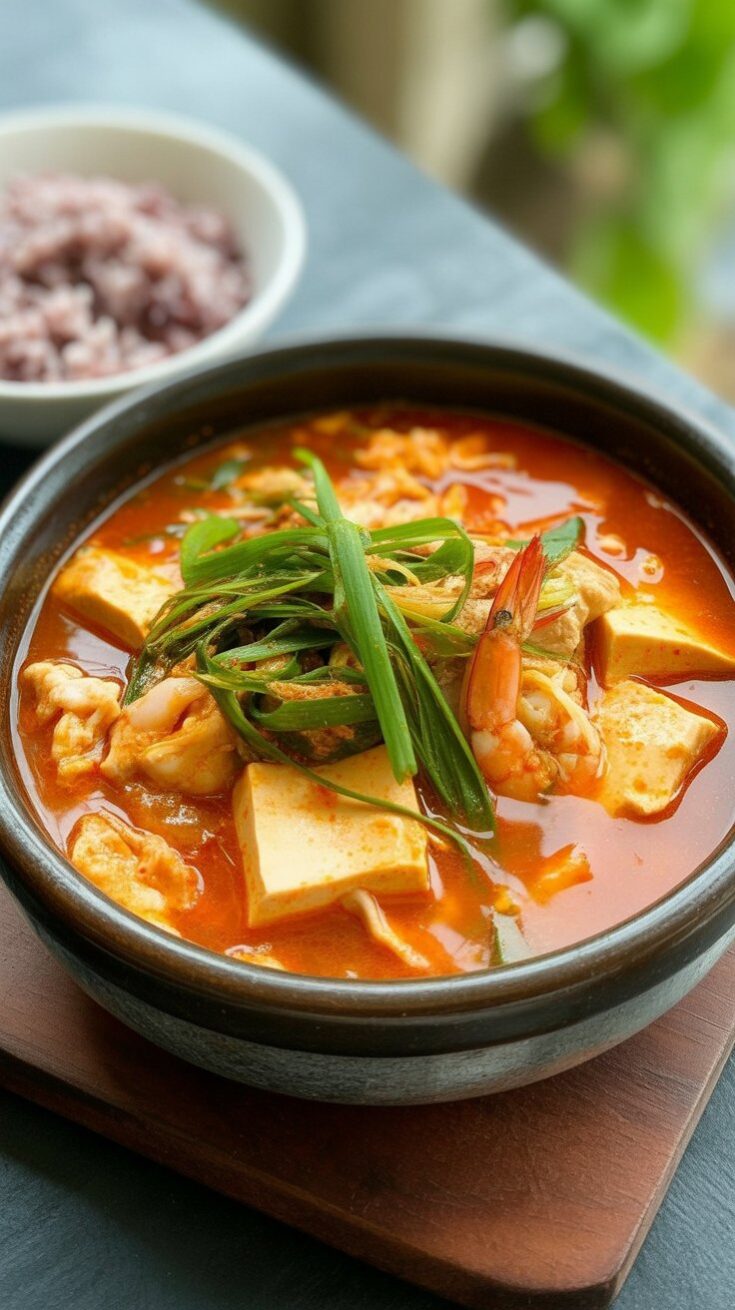
There’s nothing like a bowl of homemade soondubu jjigae to warm you up and satisfy your craving for comfort food.
Ingredients
- 320g Korean soft tofu (or regular soft tofu)
- 60g mushrooms, any kind you like
- 1/4 zucchini, diced
- 1/4 onion, diced
- 1 egg
- 1 chili pepper, chopped (optional)
- 1 green onion, chopped (divide white and green parts)
- 2 cloves garlic, minced
- 1 tbsp vegetable oil
- 1 tsp sesame oil
- 1 tbsp gochugaru (Korean chili flakes)
- 1 tbsp soy sauce
- 1 tbsp hoisin sauce or oyster sauce
- 1 tsp sugar
- 2 cups water, anchovy stock, dashi, or unsalted chicken stock
- Salt, to taste
Instructions
- Start the Base: In a small pot over medium heat, warm the vegetable oil and sesame oil. Toss in the white parts of the green onion and the diced onion. Sauté until they’re soft and aromatic.
- Flavor Boost: Add the garlic and stir for about 30 seconds. Sprinkle in the gochugaru, soy sauce, hoisin (or oyster sauce), and sugar, then stir well to combine, letting the aroma build.
- Build the Broth: Pour in your water or stock. Once it begins to bubble, add the zucchini and mushrooms. Gently spoon in the soft tofu, breaking it into large chunks right in the pot.
- Simmer: Allow the stew to boil and simmer for about 3–4 minutes, just until the veggies are tender and the flavors have melded. Season with salt to your preference.
- Final Flourish: Crack an egg directly into the bubbling stew. Let it poach for a minute or so, or longer if you prefer a firmer yolk. Top with the green part of the green onion and some chopped chili pepper for a bit of heat, if desired.
- Serve: Ladle the piping hot jjigae into your favorite bowl and enjoy immediately. Pair it with a steaming bowl of rice for the ultimate comfort meal.
Notes
- Add meat or seafood if you like: Simply sauté them after the garlic and onion before moving to the next step.
- For extra depth, toss in a handful of aged kimchi along with the garlic and onions.
- Swap out vegetables as needed—spinach, carrots, or bell peppers also work beautifully.
Nutrition Information:
Yield: 1 Serving Size: 1Amount Per Serving: Calories: 795Total Fat: 47gSaturated Fat: 9gTrans Fat: 0gUnsaturated Fat: 34gCholesterol: 213mgSodium: 3244mgCarbohydrates: 42gFiber: 7gSugar: 21gProtein: 62g
Asianplated.com, occasionally offers nutritional information for recipes contained on this site. This information is provided as a courtesy and is an estimate only. This information comes from online calculators. Although allchickenrecipes.com attempts to provide accurate nutritional information, these figures are only estimates.
Try other Korean recipes:


